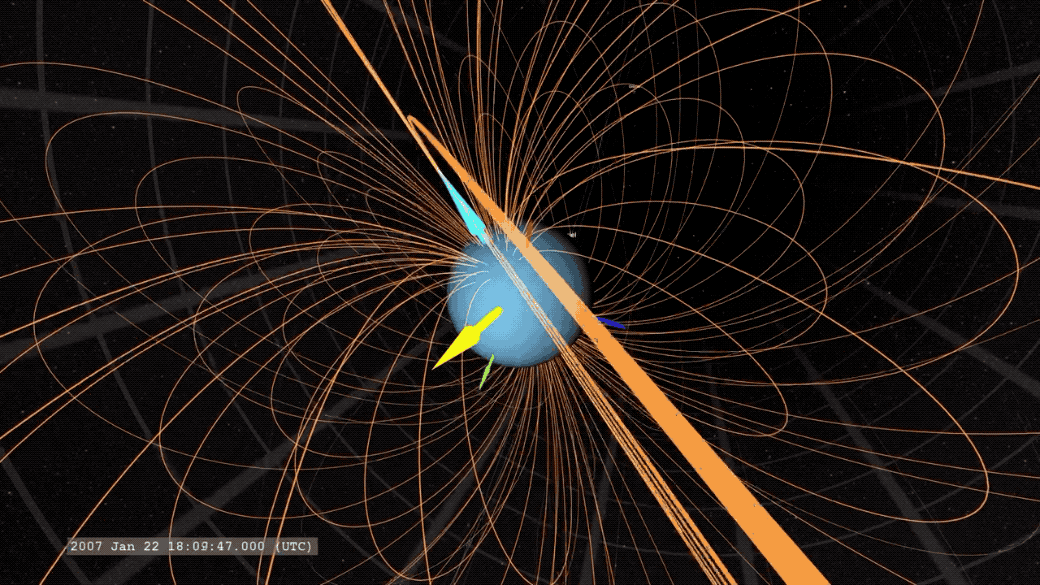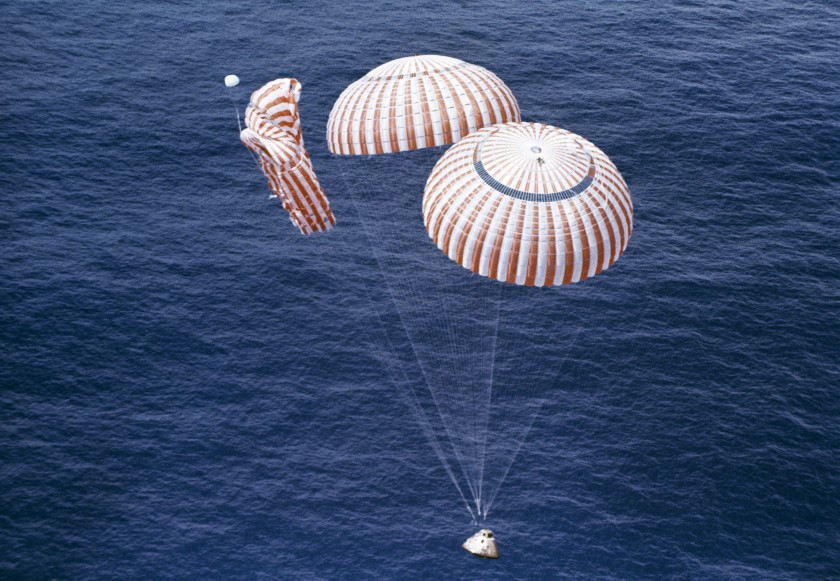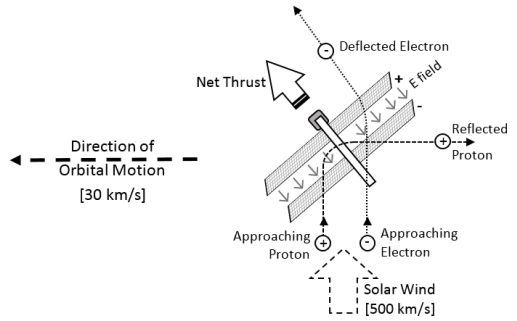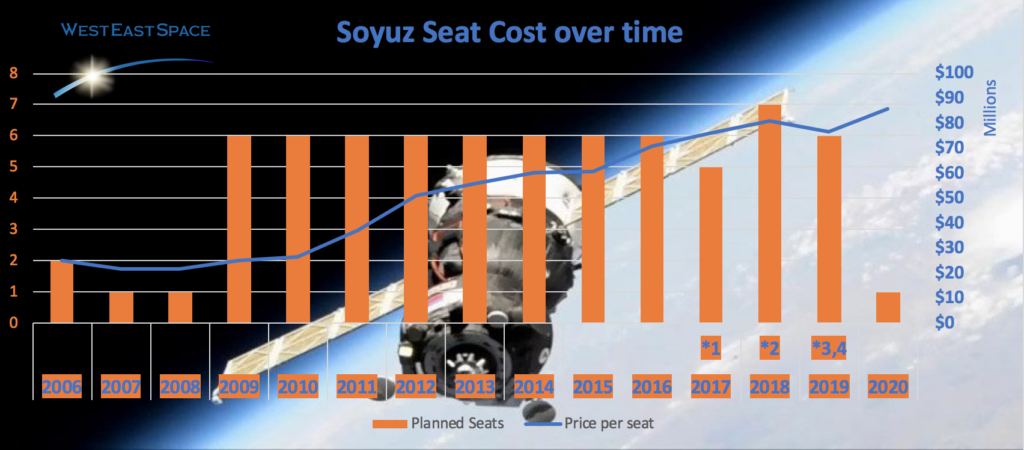NASA released a recording of the Juno spacecraft crossing into Jupiter’s magnetosphere. And telescopes are zooming in to add context to Juno’s data.




By Bill D’Zio Originally published on www.westeastspace.com
Parachutes are plaguing space programs. SpaceX doesn’t like Parachutes. They are difficult to design, hard to package, and easy to damage. The larger the mass of the spacecraft, the more effort to slow down. Larger, more efficient, complex parachute systems are needed. Several failures have hit the industry over the last few years, including SpaceX Crew Dragon, ESA ExoMars, Boeing CST-100, and the NASA Orion to name a few.
The idea of a parachute is simple. All falling objects fall the same when under the same conditions… that is so long as no outside force is exerted on it. So two objects dropped from the same altitude, one a feather and hammer will fall equally. Don’t believe me? NASA tested it on the Moon. During Apollo 15 moon walk, Commander David Scott performed a live demonstration for the television cameras. Commander Scott did the Apollo 15 Hammer and Feather test. He held out a geologic hammer and a Falcon feather and dropped them at the same time. Because there is not an atmosphere on the Moon, they were essentially in a vacuum. With no air resistance force, the feather fell at the same rate as the hammer. Ironically, Apollo 15 had a second demonstration of falling objects when one of the parachutes failed to function as planned.
On Earth, and any other planet with an atmosphere, air acts as a resistance force for an object moving through it. We can get more air resistance force by increasing the surface area. Depending on the shape of the object, it’s orientation, and the amount of resistance will increase, and therefore slow the object down. Unbalanced and uncorrected resistance can cause the object to start to turn, twist and tumble. A parachute system is deployed to generate air resistance from the atmosphere. (note that the thicker the atmosphere the more resistance) Parachutes designed for use on Earth will not be the same as a parachute designed for Mars.
Beyond density of air, the resistance depends on the speed of the and slow a falling body, the flow of gas against and around its structure(Shape). This airflow not easily to calculate as it is complex and turbulent, especially at supersonic speeds. The Apollo program did, as Elon Musk mention, find challenge in the development and testing of the parachutes. It was described as a major difficulty in design and development due to a lack of adequate analytical methods for properly predicting dynamic behavior, loads and stresses. Fast forward fifty years, Apollo mission recommendation of continued development of prediction methods for parachutes still plagues spacecraft.
In 2019, Boeing successfully tested out the emergency escape system on its new Starliner spacecraft, but one of its three parachutes failed to deploy. Since the parachutes were de.….…


By Bill D’Zio March 25, 2020
SpaceX Crew Dragon on approach Credit NASAPart 2 of the Life in Space with COVID19 we will delve into Crew demo-2 where NASA and SpaceX are planning a launch within two months. There are a lot of pre-launch milestones and activities to cover to ensure a safe flight for the Astronauts. If anything goes wrong, there are lives at stake. Now NASA and SpaceX have to contend with another potential setback, COVID19 pandemic. (Click here for part I)

The SpaceX Crew Dragon spacecraft for Demo-2 arrived at the launch site on Feb. 13, 2020. Photo credit: SpaceX
In Part I of why COVID19 pandemic is bad timing for the Space industry, we covered that issues happen because the relationship between complexity, risk, schedule and cost for space missions was not balanced.
A plot of mission complexity against schedule distribution showed that all of the partial or complete failures occur in the bottom third of the distribution indicating a strong correlation. (a partial failure means that the mission was able to continue or complete some of the original objectives)
Establishment of a ‘‘no-fly zone’’ can be done defining criteria where based on the complexity of the project the sufficient time or money to develop a system was not allocated. In short, when NASA did not allocate sufficient time and or funding in order to offset the increased complexity there was a much higher likelihood of partial or complete mission failure.
In review of the failures for these past mission failures, under budget or schedule constraints, projects tended to bypass best practices such as testing. The bypassing of tests and best practices translates into higher risk since the testing could have detected and allowed NASA to correct the issue before it impacted the mission.Journey to Mars impact by COVID19
NASA and contractors are already well behind on their efforts for the Space Launch System (SLS) rocket. Design challenges, tornados and now COVID19.
NASA has stated that work on the agency’s Artemis program continues but with limited production of hardware and software for NASA’s Space Launch System (SLS) rocket. SLS and Orion manufacturing and testing activities at NASA’s Michoud Assembly Facility and Stennis Space Center are temporarily on hold as a result of the COVID19 pandemic. The first crewless Artemis mission Orion spacecraft will be shipped from the the Glenn Research Center to its Kennedy Space Center. Recently NASA completed a series of tests required to validate the spacecraft in advance of the first mission and integration on top of SLS for the Artemis I lunar mission. The Artemis II Orion spacecraft at KSC is also still progressing.
NASA plans to leverage capabilities across the agency virtually. NASA shared that it already functions in a virtual team environment to conduct engineering analysis and other work and expects minimal impact from the requirement for mandatory telework. Since much of the lunar Gateway is still in the design phase, development work on the Gateway program can be done remotely. On-site activity beyond has been temporarily suspended until further notice.
Work also is continuing on NASA’s Commercial Crew Program. NASA is more than three years behind schedule with both SpaceX and Boeing. Further delays of the CCP could result in diminished operation of the international space station. The upcoming launch of SpaceX Crew Demo 2 is a critical element to maintaining safe operations on the International Space Station and a sustained U.S. presence on the orbiting laboratory. Additionally, commercial resupply activities and future missions also will go on as scheduled in order to keep the space station crew fully supplied and safe. SpaceX and NASA are targeting no earlier than mid-to-late May for Crew Dragon’s launch with two NASA Astronauts on board.
SpaceX is moving along on its efforts for the upcoming missions despite a public order by the mayor of Los Angeles to close “non-essential businesses” in the city, where SpaceX is headquartered. Since SpaceX is conducting work to support the ISS a strong argument can be made that SpaceX is essential. Caution still needs to be taken to avoid unexpected outcomes.

The NASA_Orion spacecraft and European Service Module are in the vacuum chamber ahead of final environmental testing Credit ESA
Recalling that the failures for many past NASA missions stemmed from projects being under budget or schedule constraints, a shortage of resources that normally would work on the project may cause complications. New resources added to projects if a key individual is sick, or if an individual is sick, can compromise projects.
New resources may tend to miss or not understand best practices. Mistakes can happen if individuals are attempting to utilize software from a home computer rather than their workstation at work. Peer reviews of work that normally would occur face to face may shift to digital medium and be less effective resulting in more time, or needing to rush through some tasks.
In short, COVID19 is forcing people out of their normal routine. Any time that happens, a good look at the assumptions behind the work need to be done to avoid higher risk situations.
About The Author

Co-Founder at WestEastSpace.com
Bill founded WestEastSpace.com after returning to China in 2019 to be supportive of his wife’s career. Moving to China meant leaving the US rocket/launch industry behind, as USA and China don’t see eye to eye on cooperation in space. Bill has an engineering degree and is an experienced leader of international cross-functional teams with experience in evaluating, optimizing and awarding sub-contracts for complex systems. Bill has worked with ASME Components, Instrumentation and Controls (I&C) for use in launch vehicles, satellites, aerospace nuclear, and industrial applications.
Bill provides consulting services for engineering, supply chain, and project management.

Electric dipole propulsion bigsmile
One reason we look so often at sail technologies in these pages is that they offer us ways of leaving the propellant behind. But even as we enter the early days of solar sail experimentation in space, we look toward ways of improving them by somehow getting around their need for solar photons. Robert Zubrin’s work with Dana Andrews has helped us see how so-called magnetic sails (magsails) could be used to decelerate a craft as it moved into a destination system. Now Zubrin looks at moving beyond both this and solar wind-deflecting electric sails toward an ingenious propellantless solution. Zubrin presented the work at last April’s Breakthrough Discuss meeting, and today he fills us in on its principles and advantages. Read on for a look at a form of enhanced electric sail the author has christened the Dipole Drive.
by Robert Zubrin
The dipole drive is a new propulsion system which uses ambient space plasma as propellant, thereby avoiding the need to carry any of its own. The dipole drive remedies two shortcomings of the classic electric sail in that it can generate thrust within planetary magnetospheres and it can generate thrust in any direction in interplanetary space. In contrast to the single positively charged screen employed by the electric sail, the dipole drive is constructed from two parallel screens, one charged positive, the other negative, creating an electric field between them with no significant field outside. Ambient solar wind protons entering the dipole drive field from the negative screen side are reflected out, with the angle of incidence equaling the angle of reflection, thereby providing lift if the screen is placed at an angle to the plasma wind. If the screen is perpendicular to the solar wind, only drag is generated but the amount is double that of electric sail of the same area.

By Bill D’Zio March 24, 2020 (Originally posted on www.westeastspace.com)
WestEastSpace mapped out NASA locations on a map of COVID19 impacted areas of USA from www.usafacts.org as of March 23rd, 2020With the launch window for NASA’s Mars Perseverance rover opening in a little less than four months, there are nearly daily pre-launch milestones to complete the rover pre flight activities at the Kennedy Space Center in Cape Canaveral, Florida. Tight schedules on complex missions usually do not mix well. Now NASA has to contend with another challenge. COVID19.
NASA Leadership Assessing Mission Impacts of Coronavirus
The world has come to a standstill and is in the grasps of the COVID-19. The world stock markets have come crashing down 30% as supply chains and companies attempt to deal with government response and public fear. Airlines and hotels have had to contend with decreased travel and lodging requirements. Logistics is impacted as factories in various countries deal with increased difficulty and requirements to obtain goods. Factories are closed leading to shortages for truckers, material movers, cargo agents, and other occupations directly involved in moving goods. Companies shift to working remotely in an attempt to comply with government guidance in attempts to minimize the impact of the virus. One Mars mission has already been sidelined because of COVID19. NASA also needs to contend with these challenges.
NASA has made several statements regarding the recent coronavirus (COVID-19) pandemic. Like many American companies, NASA leadership has stated employees will work from home.
“We are going to take care of our people. That’s our first priority,” said NASA Administrator Jim Bridenstine.
NASA has implemented what they call NASA Response Framework. The framework starts at Stage 1(least severe) and increases to Stage 4(most severe). Although most of the NASA remains under a Stage 3 status, with mandatory telework for all employees with limited exceptions for on-site work. Ames, Michoud, and Stennis are at Stage 4 with personnel on-site to protect life and critical infrastructure only. As a result, much of NASA is working from home. Contract employees in many cases will be also working from home when their activities are non-essential but are being coordinated with their contracting officer’s representative. NASA Facilities are closed, except to protect life and critical infrastructure.
“NASA leadership is determined to make the health and safety of its workforce its top priority as we navigate the coronavirus (COVID-19) situation. To that end, the agency’s Michoud Assembly Facility and Stennis Space Center are moving to Stage 4 of the NASA Response Framework, effective Friday, March 20.
The closure of these facilities to has a major impact on NASA missions. NASA leadership is reviewing options to keep work underway across all missions, projects, and programs. NASA’s goal is to identify tasks into groups:
The agency has defined mission-essential work as that which must be performed to maintain critical mission operations to ensure the schedule of time-sensitive mission-critical launches, or work to protect life and critical infrastructure.What Kills Space Projects — a quick history review
With over fifty years of experience in space missions, NASA has seen what works and what doesn’t work. For example, there is a long list of missions to Mars that have failed completely or partially. Some missions have failed from what would seem like issues that could have been predicted or stopped easily. Usually, those types of failures are predictable and preventable.
The relationship between complexity, risk and cost for space missions has been well documented with the lessons learned from past spaceflight successes and failures. A good book that touches on these risks is Douglas Hubbard and his book The Failure of Risk Management. In the book covers an evaluation of the NASA risk framework was completed and showed some very interesting relationships.

Mars (1998) Polar Lander was planed to set down on the frigid terrain near the edge of Mars’ south polar cap and dig for water ice with a robotic arm. Piggybacking on the lander were two small probes called Deep Space 2 designed to impact the Martian surface to test new technologies. The Mars (1998) Polar Lander and Deep Space 2 were both lost at arrival December 3, 1999. CREDIT NASA
A plot of mission complexity against schedule distribution showed that all of the partial or complete failures occur in the bottom third of the distribution indicating a strong correlation. (a partial failure means that the mission was able to continue or complete some of the original objectives)
Establishment of a ‘‘no-fly zone’’ can be done defining criteria where based on the complexity of the project the sufficient time or money to develop a system was not allocated. In short, when NASA… (Click here to read full article)

The emergence of the novel coronavirus and its associated disease, COVID-19, has led to a global pandemic and a call for individuals, in the name of overall public health and an attempt to prevent national medical systems from being overwhelmed with too many patients at once, to self-isolate, self-quarantine, and practice social distancing. Many of us are confronted, for perhaps the only time in our lives, with an uncertain span of time in solitude.
Although this is the first time we’ve seen this particular phenomenon, social distancing isn’t a new invention. Humans have always had good reasons to withdraw from society, often for the greater good. Among the champions of isolation and social distancing are astronauts and cosmonauts—including the late Al Worden—whose time in space has often been spent in extended periods of cramped loneliness, away from family and friends. They can serve as inspiration in these difficult times.
As a cultural anthropologist, my research focuses on human behavior, particularly types of behavior shared by groups, and it is clear that social distancing is unusual. Human beings are gregarious creatures and we do tend to be found in “corporate bodies,” ranging from small bands of 30 to 50 people all the way up to huge cities filled with millions. In band societies, everyone knows everyone else and there’s generally shared work, shared play, and lots of shared gossip. In larger societies, where we may be surrounded by virtual strangers, celebrities seem to fill in as the people everyone knows, giving us membership in a community where celebrities are “shared points of reference” (Hermes and Kooijmann 2016). I may not know you well, but we can probably talk to each other about Sigourney Weaver and Tom Hanks.

MIT’s Open Source ventilator design submitted for fast-track FDA approval. #COVID19
In many parts of the world the COVID-19 pandemic is causing shortages in hospital space, staff, medical supplies, and equipment. Severe cases may require breathing support, but there are only so many ventilators available. With that in mind, MIT is working on FDA approval of an emergency ventilator system (E-Vent). They have submitted the design to the FDA for fast track review. The project is open source, so once they have approval the team will release all the data needed to replicate it.
The design is actually made simple by using something that is very common: a manual resuscitator. You have doubtlessly seen these on your favorite medical show. It is the bag someone squeezes while the main character struggles valiantly to save their patient. Of course, having someone sit and squeeze the bag for days on end for thousands of people isn’t very practical and that’s where they’ve included an Arduino-controlled motor to automate the process.

By Bill D’Zio
NASA has been dependent on Russia for transport to and from the ISS. Over time the cost of seats on the Soyuz crew vehicle have risen.
The Roscosmos’s Soyuz vehicle has been ferrying crew to the International Space Station since November 2000. Originally Soyuz was designed to carry cosmonauts to the Moon, however was repurposed to be the main transport vehicle for Russia over the years. The Soyuz spacecraft is capable of carrying three crewmembers at a time and is certified to remain docked with the ISS for a maximum of 200 days and is launched from the Baikonur Cosmodrome launch site.
Until the NASA Commercial Crew Program (CCP) is completed, Roscosmos remains the sole option for transporting astronauts to and from the ISS. At all times, at least one of the Soyuz spacecraft is docked at the International Space Station serving as an emergency lifeboat or escape pot should evacuation be needed. Typically two Soyuz capsules are docked at the ISS which allows up to six astronauts to remain on the International Space Station. The limit of six astronauts is established by the number of seats available for evacuation.